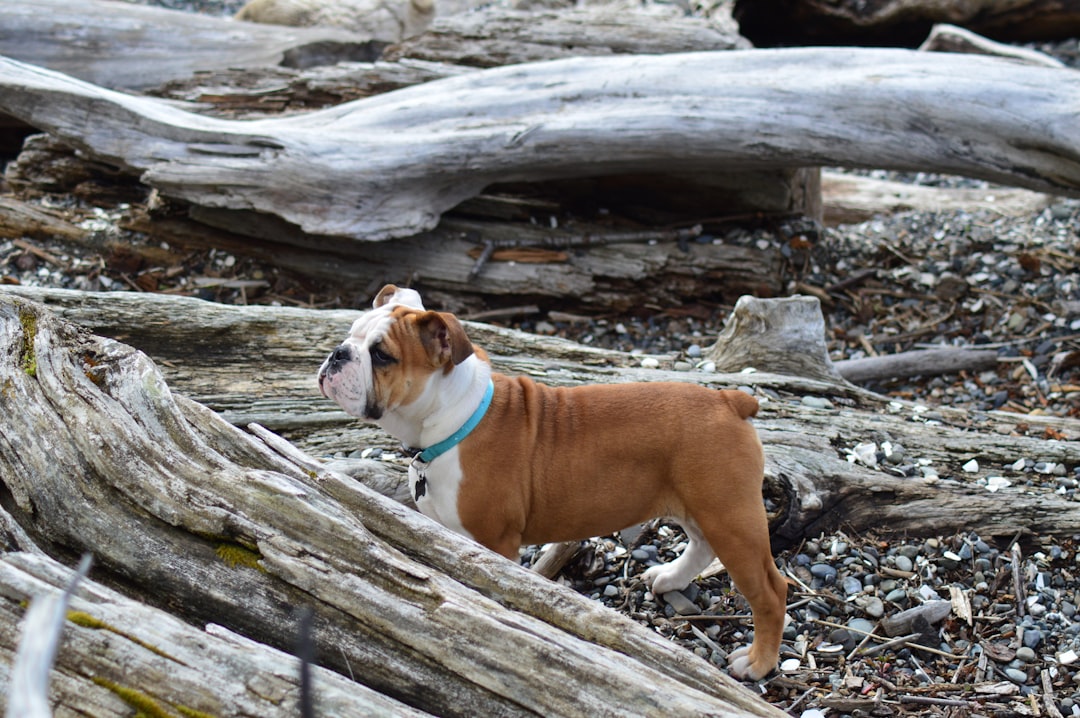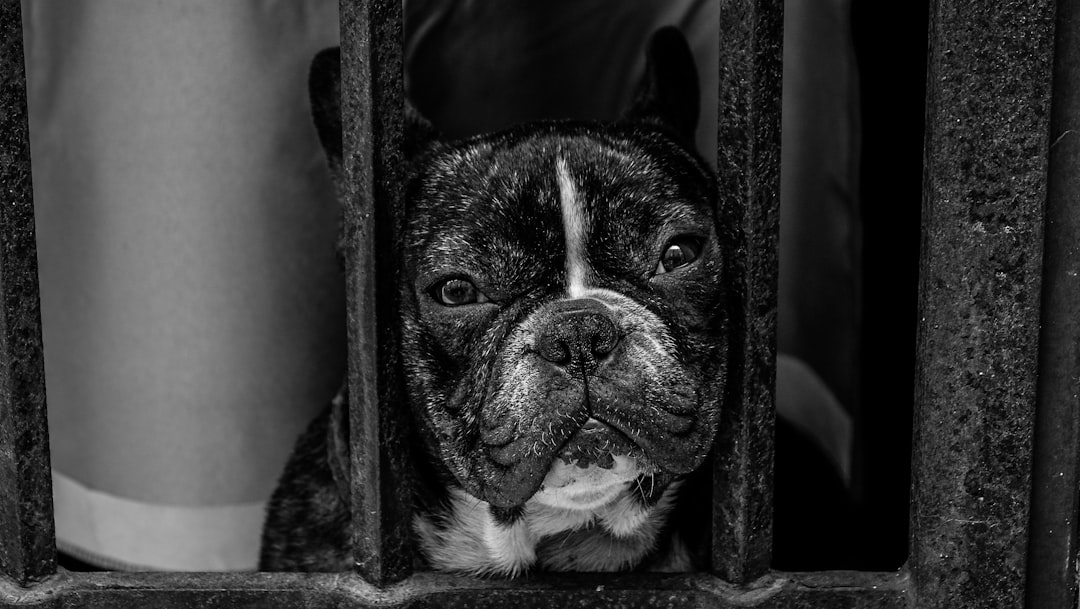Picture this: your furry friend has been happily wagging their tail, only to surprise you with a gag-inducing moment of “Dog Puking White Foam.” Yikes! This common canine conundrum can leave pet parents scratching their heads in confusion. While dramatic, this foamy display often signals something’s off in their belly. Fear not, though! In this post, we’ll dive into the causes, solutions, and everything in between to keep your pup happy and healthy. Buckle up for a journey through the canine digestive landscape!
Common Causes of Dog Puking White Foam

Seeing your beloved pup heaving and producing white foam can be quite alarming—like watching a mini horror movie unfold right before your eyes! However, before you panic, let’s explore some common culprits behind this unsettling phenomenon of dog puking white foam.
- Empty Stomach: Just like us, dogs can experience nausea when their stomachs are empty. The foam often results from bile buildup, a situation that usually resolves with proper feeding schedules.
- Gastritis: This nasty inflammation can turn even the toughest pooch into a bit of a drama queen. Spicy, fatty, or spoiled food often triggers it.
- Foreign Objects: Dogs love to munch on things they shouldn’t! If they swallow something that doesn’t quite agree with their tummy, it can lead to dog vomiting white foam as they try to expel it.
- Toxin Ingestion: Beware of curious noses! If your furry friend snags something toxic (plants, chemicals), the foam can be a sign of a serious issue.
- Infections or Diseases: Viral or bacterial infections can plague your pup’s digestive system, leading to foamy vomit.
Keep an eye out for these triggers next time you encounter dog puking white foam. If symptoms persist, a trip to the vet might just be your next adventure! 🐶✨
When to Be Concerned About Your Dog’s Health

If your dog is puking white foam, it may just be their way of expressing extreme disappointment over that last walk. However, knowing when to worry is crucial. Here are some scenarios where concern should rise like your dog’s dinner:
- Frequency: If your dog keeps revisiting dinner—especially if it’s multiple times in a day—this isn’t just a bad case of the munchies.
- Duration: Persistent vomiting can signal a more significant issue. If your dog has been puking white foam for over 24 hours, it’s time to pick up the phone!
- Behavior Changes: Is your pup acting like they’ve forgotten how to wag their tail? Lethargy, loss of appetite, or hiding can indicate discomfort.
- Accompanying Symptoms: Pay attention to other signs such as diarrhea, bloating, or fever. These can help pinpoint potential dangers lurking beneath that fluffy exterior.
Remember, acting fast could save Fido a trip to the emergency vet. If in doubt, never hesitate to consult the professionals!
How to Identify Other Symptoms

Dog owners often find themselves playing detective, especially when dealing with a case of Dog Puking White Foam. Besides the foamy mess on your floor, keep an eye out for these additional symptoms that might give you insight into the underlying issue:
- Lethargy: Is your pup less energetic or reluctant to play? This could signal discomfort.
- Diarrhea: If you notice runny stools alongside vomiting, it’s a sign of gastrointestinal distress.
- Loss of Appetite: A suddenly picky eater might indicate something’s amiss.
- Abdominal Pain: Watch for whining or tenderness when touching their belly.
- Bloating: A distended abdomen can suggest a serious condition like bloat.
| Symptom | Possible Implication |
|---|---|
| Lethargy | Possible infection or pain |
| Diarrhea | Gastroenteritis or dietary indiscretion |
| Loss of Appetite | Illness or stress |
| Abdominal Pain | Serious conditions like bloat |
| Bloating | Possible gastric dilation, needs immediate attention |
If your fur baby exhibits any of these symptoms alongside the foamy vomit, it’s time for a vet visit. Remember, early intervention is key to keeping your dog happy and healthy!
Home Remedies for Dog Vomiting
So, your dog is puking white foam, and you’re hoping for a little miracle at home before calling the vet. Fear not! Here are some remedies that could save the day:
- Fasting: Sometimes, withholding food for 12-24 hours can give your pup’s stomach a much-needed break. Just remember, they still need fresh water!
- Bland Diet: Once the fast is over, a bland diet can work wonders. Think boiled chicken and rice – it’s like chicken soup, but for dogs!
- Pumpkin Purée: This orange powerhouse is amazing for digestive health. Just a spoonful can help firm up that foam!
- Ginger: Ginger has natural anti-nausea properties. Try offering ginger tea for an extra soothing effect.
However, keep a close eye! If you notice persistent dog puking white foam or any other concerning symptoms, it’s time to bring in the big guns (aka your vet). Remember, your dog’s health is worth investing in!
Dietary Changes to Prevent Vomiting
Ah, the age-old battle of trying to find the perfect kibble! If you want to keep your four-legged friend from dog puking white foam, consider revamping their diet. Here’s how joint efforts in the kitchen can save you a few clean-up sessions:
Key Dietary Tips:
- Quality Ingredients: Look for high-quality dog food with real meat as the first ingredient. Avoid fillers that can upset their tummy.
- Fat Content: Lower-fat meals may help reduce vomiting episodes. High-fat diets can contribute to problems—even if they sound delicious!
- Small, Frequent Meals: Instead of one gargantuan bowl, try feeding your pup multiple smaller meals throughout the day. This approach can prevent that uncomfortable feeling that leads to dog puking white foam.
- Hydration: Ensure your dog has constant access to fresh water. Dehydration can exacerbate vomiting.
- Gradual Changes: If you need to switch foods, do it slowly over a week. Sudden changes can trigger a gastric rebellion!
Implementing these dietary changes can help stabilize your dog’s digestive system and keep that pesky dog puking white foam at bay! 🐾
Veterinary Treatments for Persistent Vomiting
When your furry friend experiences dog puking white foam on a regular basis, it’s time to take a trip to the veterinarian. While the occasional episode may seem harmless, persistent vomiting can signal something more serious lurking beneath the surface. Here’s what you can expect during your visit:
- Diagnosis: The vet will conduct a thorough examination, possibly including blood tests or imaging studies (like X-rays) to uncover the root cause of the vomiting.
- Medications: Depending on the diagnosis, treatments may include:
- Anti-nausea medications
- Antibiotics for infections
- Medication to address gastric acid issues
Treatment Purpose Anti-nausea meds Reduce vomiting and settle the stomach Antibiotics Treat underlying infections Acid reducers Curb excessive stomach acids - IV Fluids: If your dog is dehydrated, IV fluids may help restore hydration and electrolytes.
Remember, don’t let the sight of dog puking white foam slide! Early intervention can save your pet from discomfort and ensure a speedy recovery. Always consult your vet for the best course of action!
Preventive Measures for Your Dog’s Digestive Health
Avoiding the dreaded scene of Dog Puking White Foam doesn’t require a magic wand; just a few proactive strategies will do the trick! Here are some easy-peasy preventive measures to keep your pup’s tummy in check:
- Consistent Feeding Schedule: Dogs thrive on routine. Set meal times to prevent them from eating too fast or scavenging.
- Choose Quality Food: Invest in high-quality dog food, rich in nutrients but low in fillers to minimize gastric upset.
- Bad Ingredients: Artificial flavors, fillers, or low-quality proteins.
- Good Ingredients: Real meat, wholesome grains, and vegetables.
- Hydration Matters: Always provide fresh water, ensuring your dog stays properly hydrated— dehydration can lead to vomiting.
- Regular Exercise: A healthy lifestyle curbs anxiety and promotes proper digestion. Fun playtime can also prevent them from eating their stress away!
- Monitor Treats: Avoid overindulging with table scraps or treats; too many goodies can lead to Dog Puking White Foam dilemmas.
Implementing these strategies will help you keep your furry friend’s belly happy and reduce the chances of a surprise foam eruption! 🌟
Preventive Measures for Your Dog’s Digestive Health
When it comes to Dog Puking White Foam, prevention is key, and a little TLC goes a long way. Here are some simple yet effective measures to keep your furry friend happily digesting:
- Routine Check-ups: Regular vet visits catch potential issues before they escalate into something severe. After all, prevention is better than a panic-induced trip to the clinic!
- Balanced Diet: Ensure your dog’s diet is nutritionally balanced. Opt for high-quality dog food and avoid table scraps that might upset their tummy.
- Hydration: Keep fresh water available at all times. Dehydration can lead to gastric issues and we all know nobody enjoys when Dog Puking White Foam becomes a regular occurrence!
- Regular Exercise: A tired dog is a happy dog! Regular walks and playtime aid digestion and can reduce anxiety, which often triggers vomiting.
- Mindful Eating: If your pup tends to gobble its food, consider a slow feeder bowl to prevent undue stress on their delicate stomach.
With these preventive measures, you can help ensure your dog stays fit and fabulous, minimizing the chances of seeing that contentious Dog Puking White Foam!
Frequently Asked Questions
Why is my dog vomiting white foam?
Ah, the infamous white foam! If your furry friend is tossing up a frothy mixture reminiscent of a shaken-up soda, it could be due to several reasons. Most commonly, it’s a sign that their stomach is empty and they’re expelling bile, or perhaps something much more sinister is at play, like pancreatitis or even a case of gastritis. Always a good idea to check in with your vet before scheduling your pup for a Jackson Pollock-style art installation on your carpet.
What should I do if my dog keeps vomiting foam?
If your pooch’s new party trick is hurling up white foam more than once, it’s time to take action. Start by withholding food for a few hours (yes, even that sad puppy dog look won’t work). After a brief pause, reintroduce bland food in small portions—think plain rice or boiled chicken. However, if the foamy farewell persists, grab those keys and head straight to your vet like it’s a puppy emergency – because it just might be!
Can a change in diet cause my dog to vomit white foam?
Absolutely! Dogs can be finicky creatures with more dietary preferences than a food critic at a five-star restaurant. Switching their food too quickly can lead to digestive distress and result in vomit that’s not just white, but also foamy. If you recently introduced a new kibble, remember to transition slowly by mixing it with the old food over several days. It’s like slowly getting your pup used to a new flavor profile without shocking their taste buds!
When should I consult a veterinarian about my dog’s vomiting?
If your dog’s regurgitation resembles a foamy fountain, first check if they’re showing any other signs of distress, such as lethargy, diarrhea, or refusing to eat. If the foamy affair doesn’t cease or is accompanied by other symptoms, it’s time to ring up your vet. Never underestimate the internal drama of a dog’s tummy; they might just be throwing a fit over something serious. Better safe than sorry!



